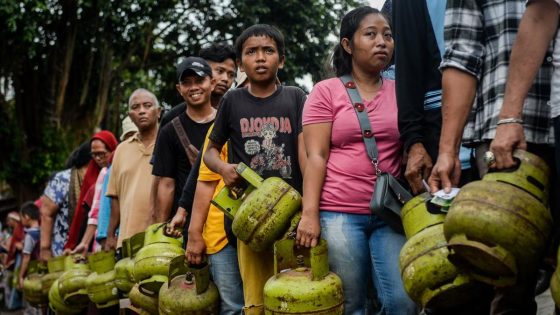NASA recently unveiled stunning images showing the transformation of Indonesia‘s new capital, Nusantara. Captured by Landsat satellites, these images reveal significant changes between April 2022 and February 2024. But what does this mean for the future of urban development in Indonesia and beyond?
- NASA releases images of IKN Nusantara development
- Significant changes observed from 2022 to 2024
- IKN construction began in July 2022
- Jakarta faces severe environmental challenges
- Concerns over impact on local biodiversity
- Completion of IKN projected for 2045
NASA’s Images Showcase Dramatic Changes in Indonesia’s New Capital City
What happens when a city is built from scratch? NASA’s satellite images reveal the ambitious progress of Nusantara, Indonesia’s new capital, which began construction in July 2022. The images indicate extensive land clearing for infrastructure, raising questions about environmental impacts and urban sustainability.
Understanding the Impacts of Nusantara’s Development on the Environment
The construction of Nusantara is not just a local issue; it has global implications. As Jakarta faces severe environmental challenges, including flooding and pollution, the move to a new capital aims to address these issues. However, the clearing of land in a biodiversity-rich area raises alarms.
Key Environmental Concerns Surrounding Nusantara’s Construction
As Nusantara takes shape, several critical environmental issues emerge:
- Deforestation: Large areas of forest are being cleared, threatening local wildlife.
- Water Management: Jakarta’s water crisis could worsen if sustainable practices aren’t adopted.
- Urban Heat: New urban areas can create heat islands, impacting local climates.
- Biodiversity Loss: The region is home to unique species that may be endangered by development.
The Future of Urban Development in Indonesia and Beyond
Nusantara’s development could set a precedent for future urban planning globally. With lessons learned from Jakarta’s struggles with congestion and pollution, Nusantara aims to incorporate sustainable practices. Will this new city become a model for environmentally friendly urban development?
In conclusion, the transformation of Nusantara is a fascinating case study. While it promises to alleviate Jakarta’s environmental issues, careful consideration of ecological impacts is vital for its success. As the world watches, Indonesia’s new capital could redefine urban development strategies for years to come.
































